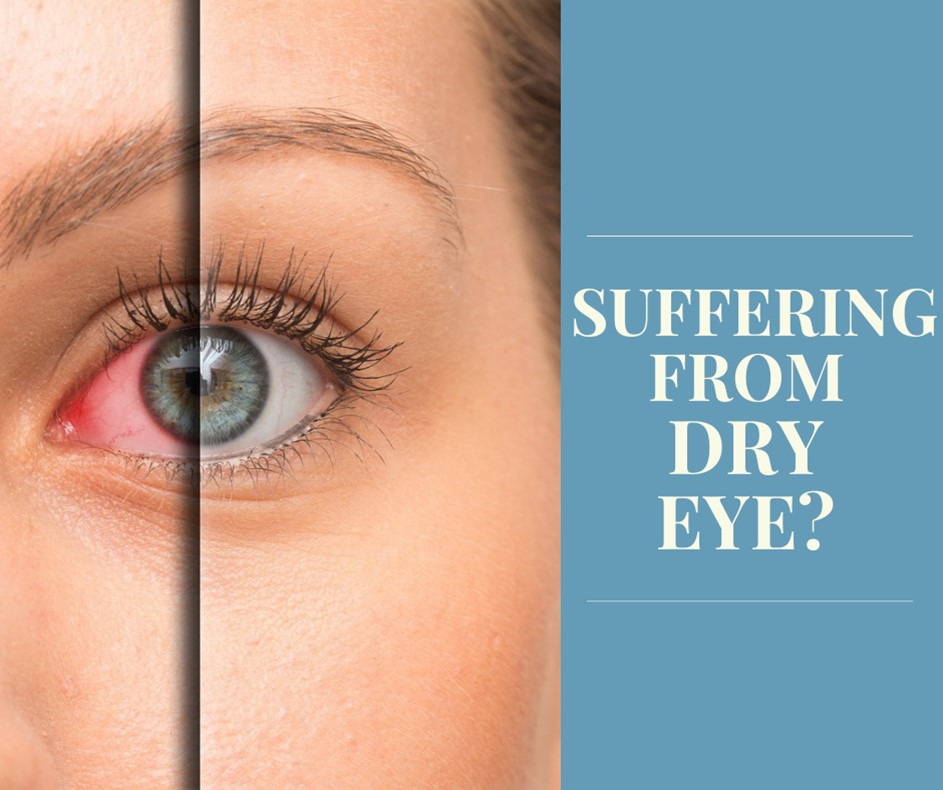Home » News and Events » Suffering From Dry Eye?
Suffering From Dry Eye?
Posted by: Florida Eye Microsurgical Institute in Worth Sharing...

Dry eye disease is a common condition occurring when your tears cannot provide lubrication for your eyes. Tears can be scarce to produce for many reasons, which can cause your eyes to feel uncomfortable. The tear instability leads to inflammation which may damage the eye’s surface. In certain situations, you may experience dry eyes, such as looking at a computer screen for hours, the fall wind, smoke, or an arid climate. The best way to determine what your eyes are genuinely suffering from is to be correctly diagnosed by your eye doctor. We are here to partner in your eye health and share the process of dry eye diagnosis.
How Is Dry Eye Diagnosed?
Your eye doctor will begin with a comprehensive eye exam. The examination will include your eyelids, the eye’s surface, and how you blink.
There are many different tests to help diagnose dry eyes. Your eye doctor will determine what is best for your eye health needs. Here are a few tests and procedures used to determine the cause of your dry eyes:
- A test to measure the volume of your tears. Your eye doctor may measure your tear production using the Schirmer test. In this test, blotting strips of paper are placed under your lower eyelids. After five minutes, your doctor measures the amount of strip soaked by your tears. Another option for measuring tear volume is the phenol red thread test. In this test, a thread filled with pH-sensitive dye (tears change the dye color) is placed over the lower eyelid, wetted with tears for 15 seconds, and then measured for tear volume.
- Quality of your tears test. Other tests use special dyes in eyedrops to determine the surface condition of your eyes. Your doctor looks for staining patterns on the corneas and measures how long it takes before your tears evaporate.
- A tear osmolarity test. This type of test measures the composition of particles and water in your tears. With dry eye disease, there will be less water in your eyes.
- Tear samples to look for markers of dry eye disease, including elevated matrix metalloproteinase-9 or decreased lactoferrin.
Does Dry Eye Go Away?
Treating Dry Eye by Adding Tears
Your eye doctor might suggest you use artificial tears. These are eye drops that are like your own tears. Your eye doctor will instruct you when to use and what brand is suited for your eye health needs.
Stop Dry Eye by Saving Tears
Your eye doctor may suggest blocking your tear ducts. Blockage of your tear ducts makes your natural tears stay in your eyes longer. These tiny silicone or gel plugs (called punctal plugs) may be inserted into your tear ducts and can be removed later as needed. Your eye doctor may prescribe an eyedrop medication. Eyedrop medication will also help your eyes make more natural tears.
How To Prepare for Your Eye Doctor Appointment?
- List any symptoms you’re experiencing, including any that may seem unrelated to why you scheduled the appointment.
- List essential personal information, including any recent life changes and family eye health history.
- Make a list of all medications, vitamins, and supplements that you’re taking.
- List questions to ask your doctor.
What to Do in the Meantime Before Your Appointment
- If possible, try not to use a hairdryer.
- Stay away from high-heat rooms. As we are in fall and approaching the winter weather, add moisture to the air with a humidifier.
- Protect your eyes from the drying wind by wearing sunglasses outside.
To relieve your symptoms while you wait for your appointment, try over-the-counter lubricating eyedrops (artificial tears) and avoid those that advocate reducing redness in the eyes. Eyedrops that minimize eye redness can cause additional eye irritation.
We are here to help keep your eyes feeling good and healthy! Our highest priority is our patients’ eye health.

References: American Academy of Ophthalmology
The content is researched and vetted by the American Academy of Ophthalmology and the This blog provides information and discussion about eye health and related subjects. The content provided on this blog and any linked materials are not intended and should not be considered medical advice. If the reader or any other person has a medical concern, they should consult with an appropriately licensed physician.
